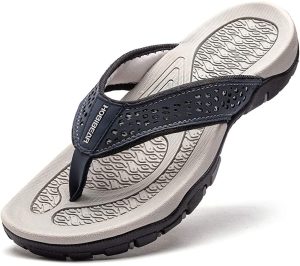The journey of sandals spans centuries, cultures, and civilizations, showcasing the fascinating evolution of footwear. From their humble beginnings as basic protective coverings to the diverse array of styles we have today, sandals have played a significant role in human history. Let’s explore the captivating evolution of sandals from ancient roots to modern soles:
🌍 Ancient Origins: Sandals can trace their origins back to ancient civilizations. Early humans used materials like leaves, grass, and animal hides to create basic coverings for their feet. These rudimentary foot coverings eventually evolved into the concept of sandals.
⚖️ Functional and Cultural Significance: Sandals were primarily designed to protect the feet from rough terrain, hot surfaces, and natural elements. Different cultures and regions began crafting sandals based on local materials and climatic conditions, leading to a wide variety of styles.
🏺 Ancient Egypt: In ancient Egypt, sandals were often made from papyrus and palm leaves. They symbolized social status, with the wealthy wearing more intricate and decorative designs. Sandals were depicted in Egyptian art and were an integral part of daily life.
🏛️ Ancient Greece and Rome: Both ancient Greek and Roman civilizations used sandals as footwear. Greeks favored the simple and functional design, while Romans introduced more complex sandal styles made from leather and adorned with straps and buckles. Gladiator sandals, worn by Roman soldiers, became iconic.
🗿 Indigenous Peoples: Indigenous cultures around the world crafted sandals using materials native to their regions. Native Americans, for example, created sandals from plant fibers and leather, adapting designs to suit their lifestyles and environments.
🌴 Asian Influences: In Asia, sandals took on various forms. Traditional Japanese zori and geta were made from wood and rice straw, while Indian juttis and Thai flip-flops showcased intricate craftsmanship and cultural significance.
🧘♀️ Bohemian Revival: In the 1960s and 1970s, a bohemian and counterculture movement brought attention to simple and natural sandals like huaraches, birkenstocks, and woven styles. These sandals aligned with the back-to-nature ethos of the era.
🌟 Modern Fashion: Today, sandals come in an array of styles, materials, and designs. From casual flip-flops to high-fashion runway creations, sandals have transformed from practical footwear to style statements. Comfort and functionality remain crucial, with orthopedic and ergonomic designs catering to varying needs.
🌎 Global Influence: The globalized world has led to a fusion of sandal styles, with traditional designs merging with contemporary aesthetics. Modern technologies and sustainable materials are being integrated to create sandals that prioritize both comfort and ecological responsibility.
The evolution of sandals reflects humanity’s journey through time and culture. From ancient protection to modern fashion statements, sandals continue to adapt, providing both a link to our heritage and a canvas for creativity. As we step into the future, sandals will undoubtedly continue to evolve, leaving their mark on the world of fashion and beyond.















